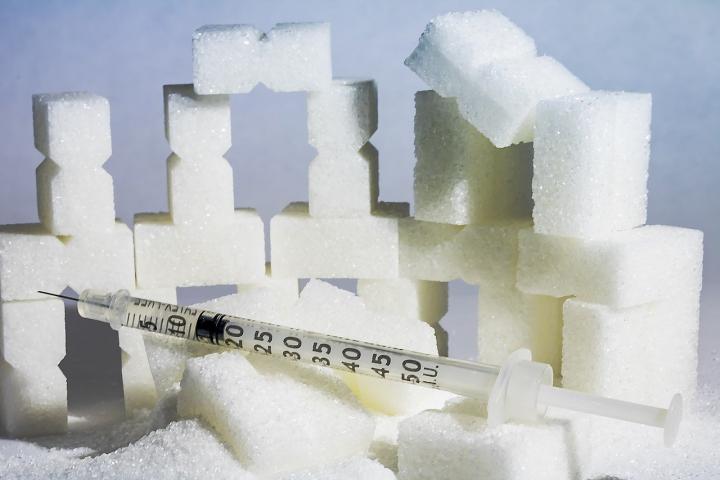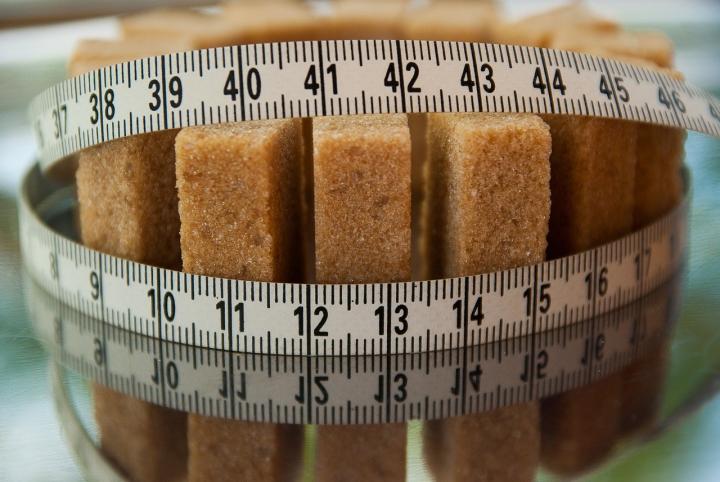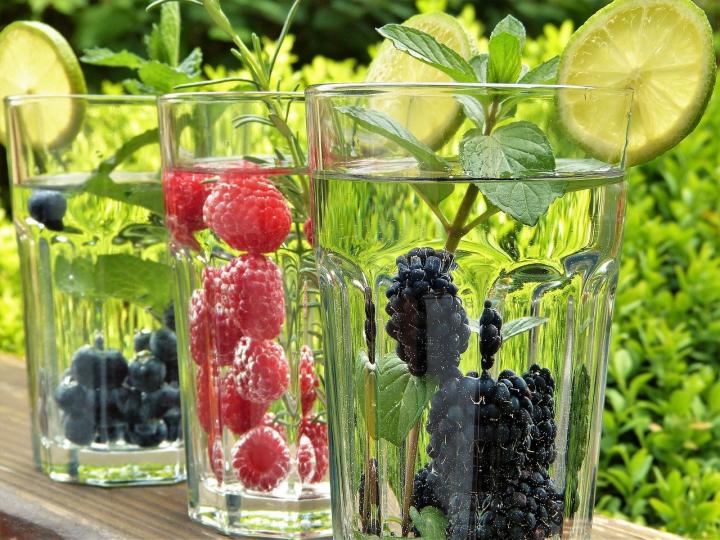Do you crave sweet foods to the point where once you start, you can’t stop? Or, do you feel satisfied with a single cookie or a small piece of pie? If you fall into the first category, you have a lot of company. And a lot of you are trying to quit or cut down on sweet foods and drinks.
To be clear, we’re not talking about naturally-found sugar found in fruit and vegetables; this actually has little effect on your blood sugar, and you’re consuming lots of healthy vitamins and minerals.
The danger is from “added” sugars in processed food. Eating too much sugar is one of the worst things you can do for your bodies and responsible for 180,000 deaths every year! Too much sugar leads to obesity, type 2 diabetes, heart disease, cancer, and tooth decay.

Why We Crave Sugar
Science suggests our sugar cravings have many root causes. For starters, scientists say our long evolutionary history favored humans able to find, consume, and relish foods with high concentrations of natural sugars. Other causes (which may be related to this evolutionary development) may include: a mother’s diet during pregnancy, the quality of a person’s sleep, and certain genetic factors.
In modern consumer societies, industrial food producers have found ways to extract and concentrate the sugars that occur naturally in fruits, roots, and grains. Adding these concentrated sugars to processed foods and drinks enhances their taste appeal at a relatively low cost to the producer.
It’s brought us to the point where the average American consumes 57 pounds of added sugars per year, or 17 teaspoons a day!
How much sugar do we actually need? According to AHA guidelines, we shouldn’t get more than 100 of our daily calories (about 6 teaspoons) from added sugar. Your body does not need any added sugar.

Natural Sugar Versus Added Sugar
Here’s the deal. Your body doesn’t need any quantity of added sugars. They contribute nothing but calories, and maybe a quick energy boost, both of which you can get with a naturally sweet food.
Not only does added sugar deprive our bodies of the many essential nutrients we get from eating foods containing them instead of foods containing natural sugars, but excess sugar is implicated in dental health problems and chronic health conditions such as heart disease, diabetes, and obesity. Ongoing research also suggests links to some cancers, Alzheimer’s disease, depression, acne, and premature cell aging from sugar over consumption.
It’s important to understand the difference between “added sugars,” and natural sugars.
The FDA now requires that the amount of added sugars appear on food labels. The term “total sugars” includes both natural sugars and the sugars a manufacturer has added to increase the sweetness of a product. Scroll down on the right side of the page to see 61 kinds of added sugar you may see listed on a food label. Many of them don’t contain the word “sugar,” so the sweet stuff can creep in stealthily.
Though we think of them as natural, maple syrup and honey—both highly concentrated sugars—are also considered added sugars.
Can sugar really be addictive?
The FDA defines addiction as craving for and continued use of a substance that is hazardous to your well-being. Researchers from the University of Minnesota found that sugary foods cause—in the brains of animals—a chemical effect similar to that of addictive drugs like cocaine. Whether this response constitutes addiction in the technical sense is still debated. What is clear, however, is that people have a hard time giving up sweets.

Add mint, lime, lemon, cucumbers, or berry to water. How about some sparkling water for a homemade soda?
Ways to Curb “Added” Sugar
So, you want to quit sugar, or at least slow way down? In no particular order, here’s a list of strategies which others (including yours truly) have used to keep our sweet tooth in check:
- Start by checking the labels on all the jars, cans, bottles, boxes, plastic tubs, and packages of purchased foods and drinks you eat regularly. You may be surprised at how many of them contain added sugars, and how much sugar they add to your daily diet. Begin choosing products that contain little or no added sugar and less total sugar. Better yet, begin making your own sugar-free soups, sauces, and baked goods.
- Quit cold turkey, then keep abstaining. Avoiding all added sugars may not work for everyone, but it can work, even for folks who feel addicted and even experience mild withdrawal symptoms. Bear in mind that millions of people are successfully recovering from addictions to nicotine, alcohol, cocaine, heroin, prescription opioids, and other substances. Do not bring sugar, sugar-containing foods, or sugary beverages into your house. At first, you may want to avoid dried fruits, and even fresh fruits, which may trigger your sweet tooth.
- If you drink a lot of soda, sports drinks, or other sweetened beverages, try substituting a glass of water, seltzer, tea or coffee in place of one sweet drink you crave. Many of these drinks have heaps of added sugar and contribute almost half of the added sugar in the typical American diet!
- If you drink two sodas per day, try a week or substituting a glass of water for one of them. Add some mint, cucumber, or lemon if you’d like. How about some sparkling water for a homemade soda?
- For sugared and frothed latte-lovers: Froth up some skim milk to top off your coffee, and sprinkle it with cinnamon, a natural sweetener.
- Of course, herbal or fruit teas (either hot or cold with ice) are also good substitutes.
- Stop thinking of sweet foods as treats or rewards. Because sugar can harm you, treat yourself instead to your favorite main dish, or do something that makes you feel good: a hot bath, a funny movie, a long walk. Leave what are traditionally called “desserts” off the menu entirely, especially in the beginning of your sugar fast. And, if you’re trying to lose weight, forget those low-fat or fat-free snacks. Most of them add extra sugar to replace the fat.
- If you’re simply cutting back, think of desserts for weekends, not every day.
- Try fresh fruit which is naturally sweet, or top fruit on Greek yogurt for your sugar fix.
- How about baked fruit (pears, apples or plums)?
- Dark chocolate with high cocoa content is often low in sugar. See my post on dark chocolate health benefits.
- Sweeten foods yourself.Try adding real sugar with fruit. Even if you sweet with honey or sugar, you won’t be sweetening as much as a manufacturer.
- Add fresh fruit to yogurt; don’t buy those (often artificial) pre-sweetened yogurts.
- Buy unsweetened oatmeal or sweet oats. Then add your own fruit or sweetener.
- Watch those dressings and sauces. Why not make your own dressing with 4:1 ratio oil: vinegar. Add salt and pepper and leave it out on the counter.
- Buy ketchup with less sugar content; use mustard and pesto and lower-sugar condiments.
- Avoid so-called “healthy” packaged snack foods (like granola bars). Consider simply eating your own nut mix or trail mix (all nuts are good, especially almonds, walnuts, and pumpkin seeds).
- Eat breakfast! It really does reduce your body’s cravings later. And eat the right breakfast! Packaged cereal is often packed with sugar. Steel-cut oatmeal, any type of eggs, and fruit are all good breakfast choices.
- Get your protein. Protein has also been shown to directly reduce food cravings. As you approach each meal, think about how you can include protein. Meat, fish, eggs, full-fat dairy products, avocados and nuts are all sources of protein.
- Allow yourself an occasional sugar splurge. If you don’t want to quit sugar entirely, give in to a one-meal binge—once a week, once a month, once or twice a year. We do this in our house. On special holidays and birthdays, we allow ourselves to binge on a sugary food—often brownie sundaes or a pie with cream. We go all out, and treat it as an entire meal (sometimes regretting it later). We don’t try to limit our serving size, but we don’t make enough for leftovers.
The good news: While the first week of cutting back on sugar will be a challenge, your body will adapt as you get used to eating less added sugar. It will be satisfied with a splurge here and there and you will find more balance. As said above, it’s not natural sugar that’s the main issue. It’s the added sugar to processed foods.
Readers: Please share any tricks that have helped you cut back or eliminate added sugar from your diet.
Related Content Here are 7 naturally-sweet vegetables and fruit to grow!













Comments